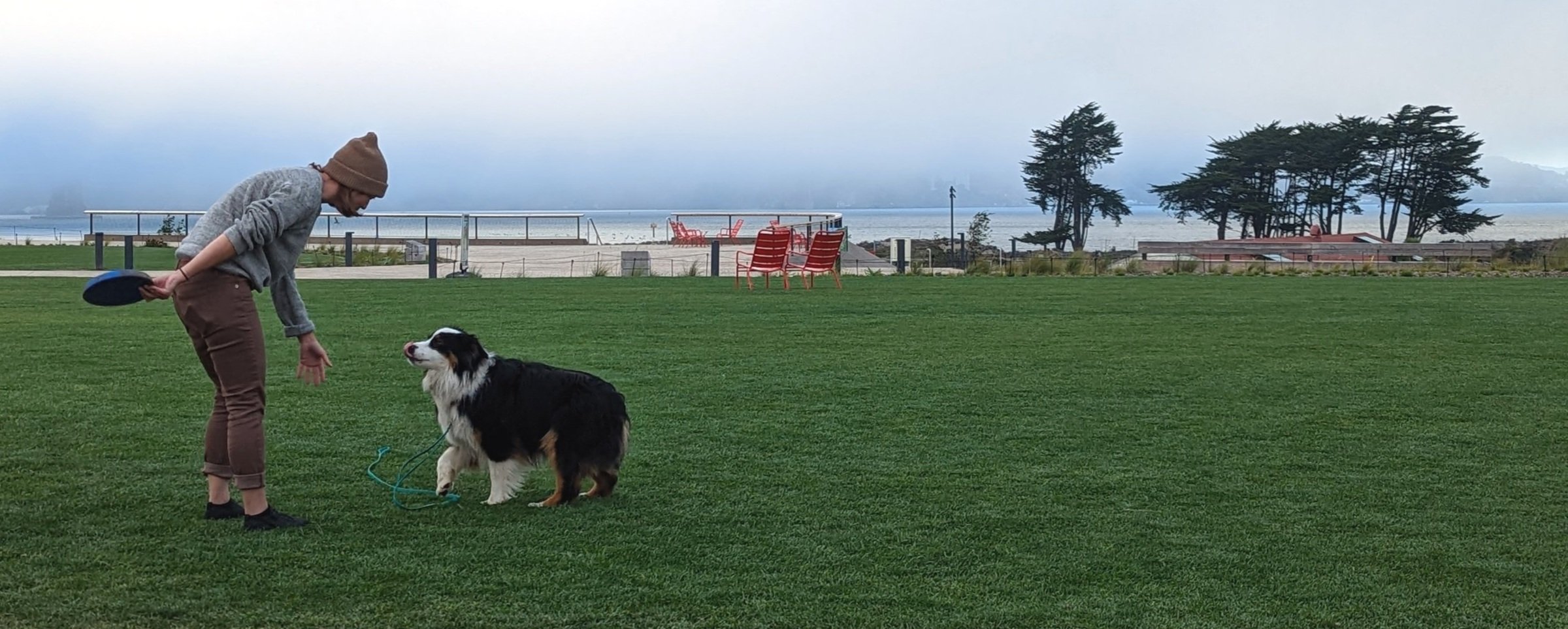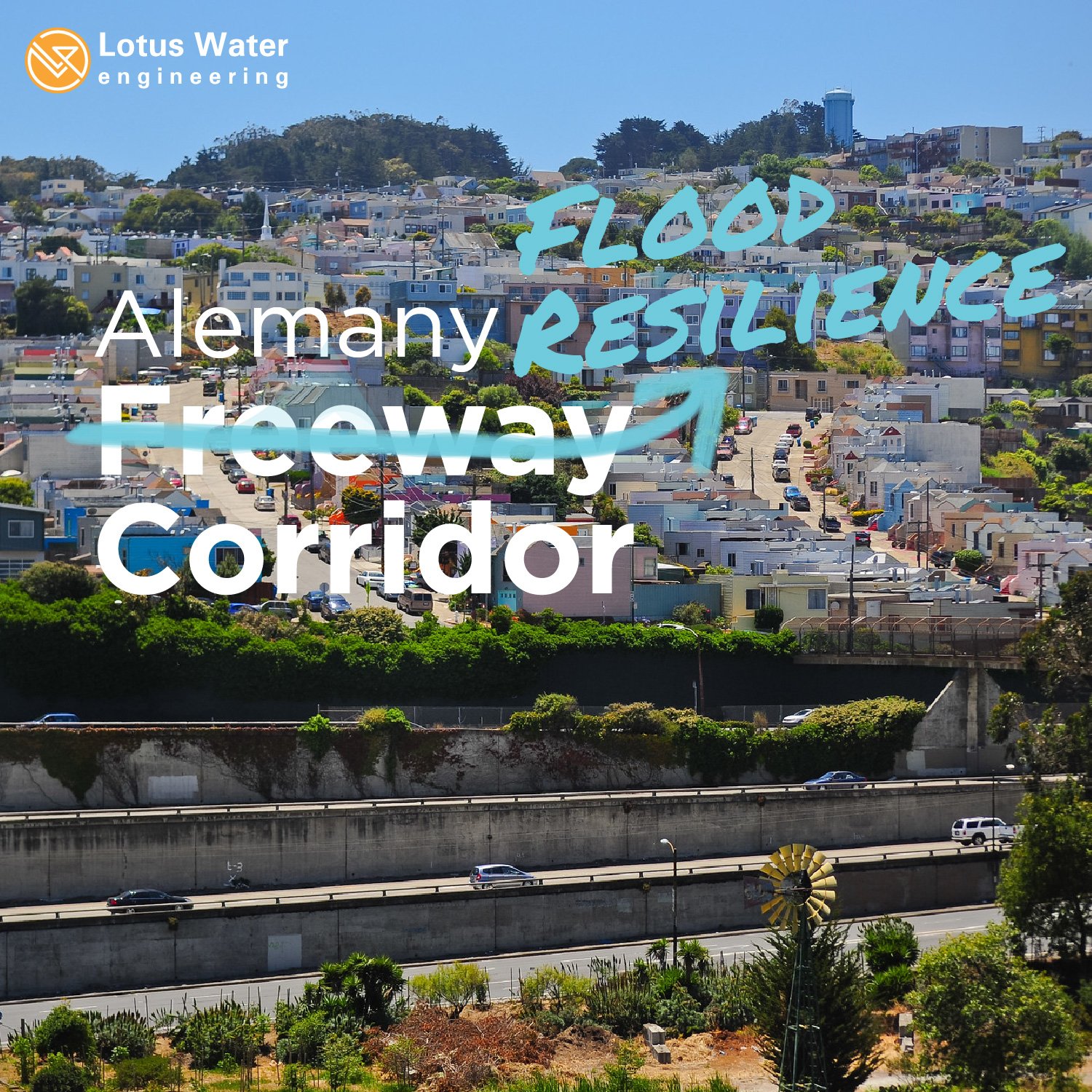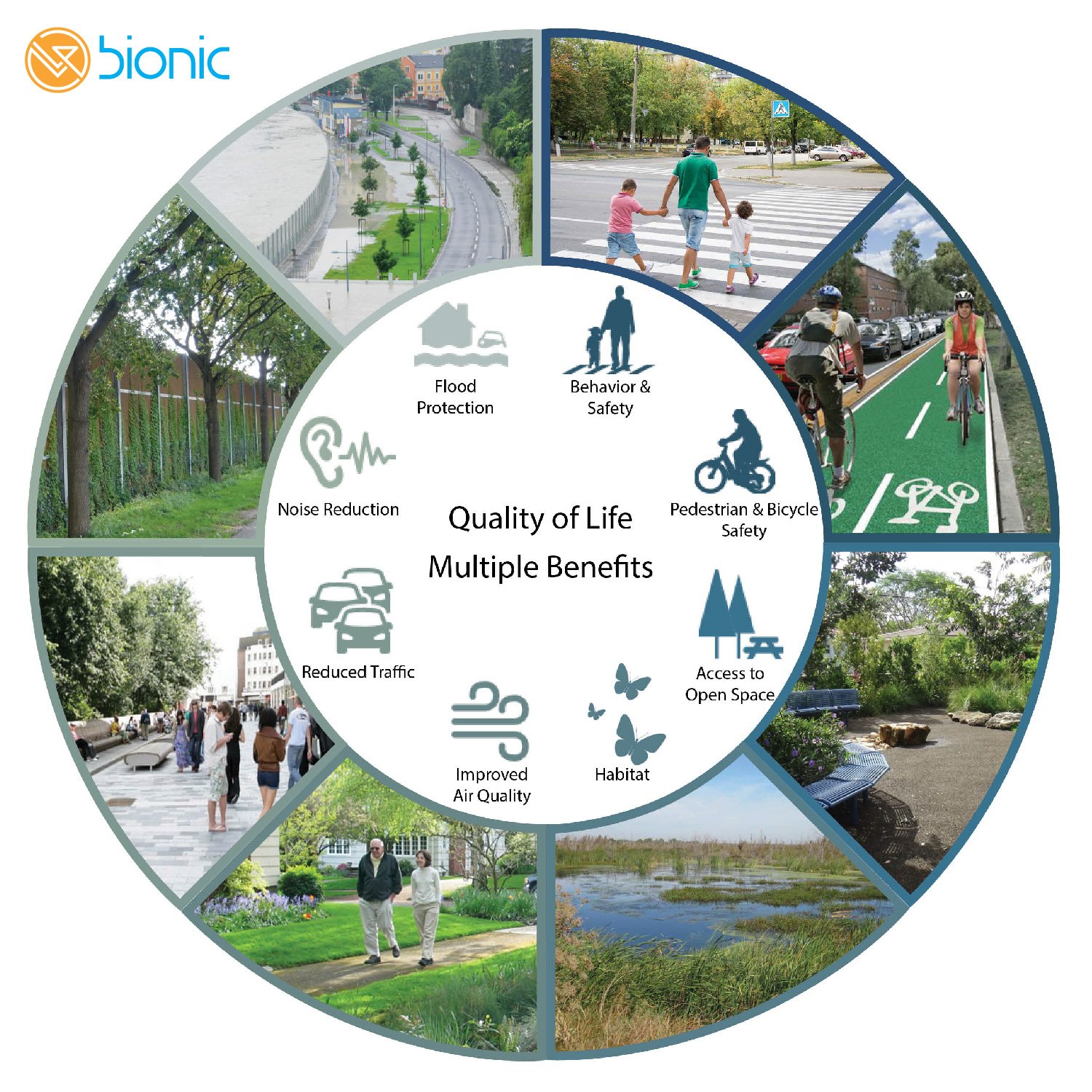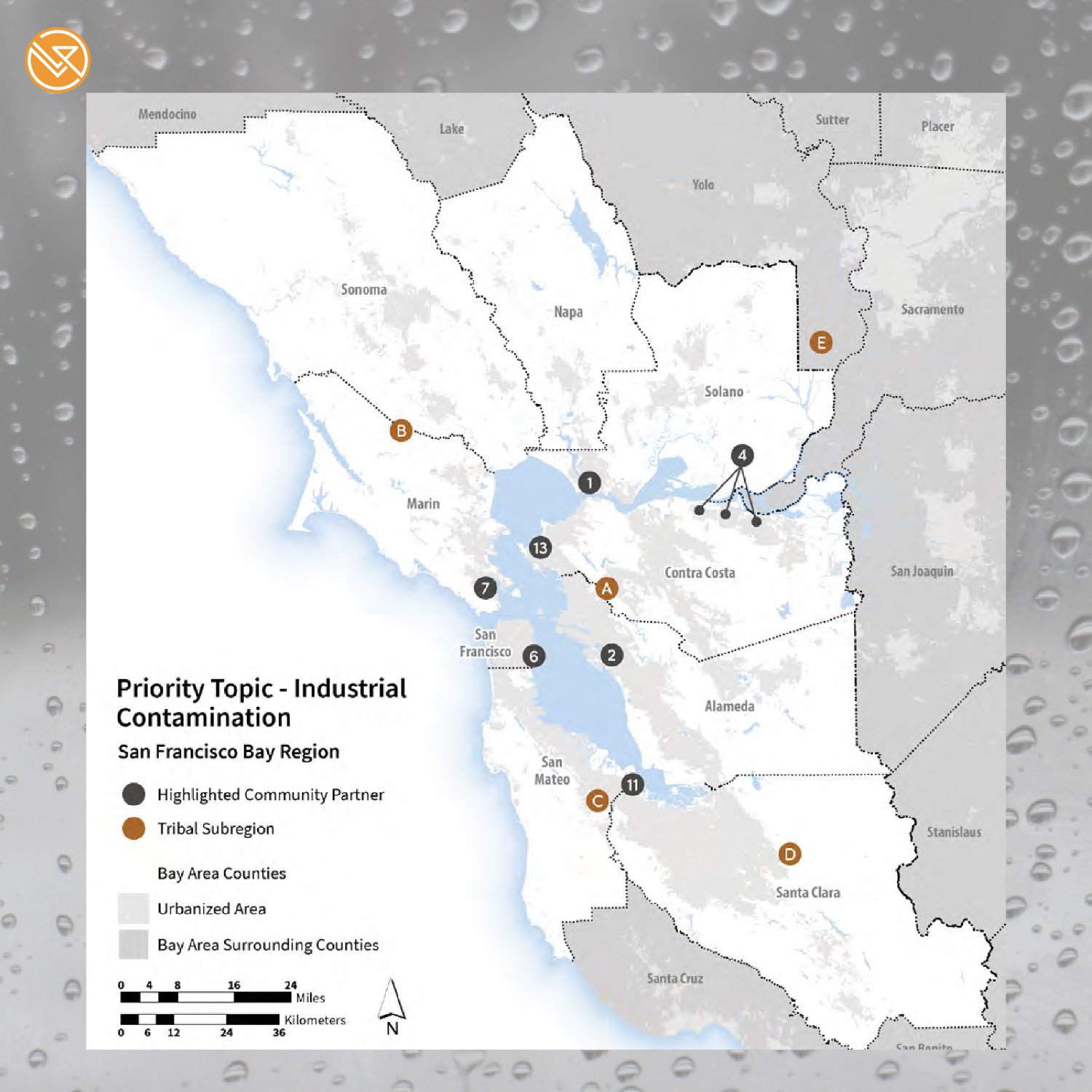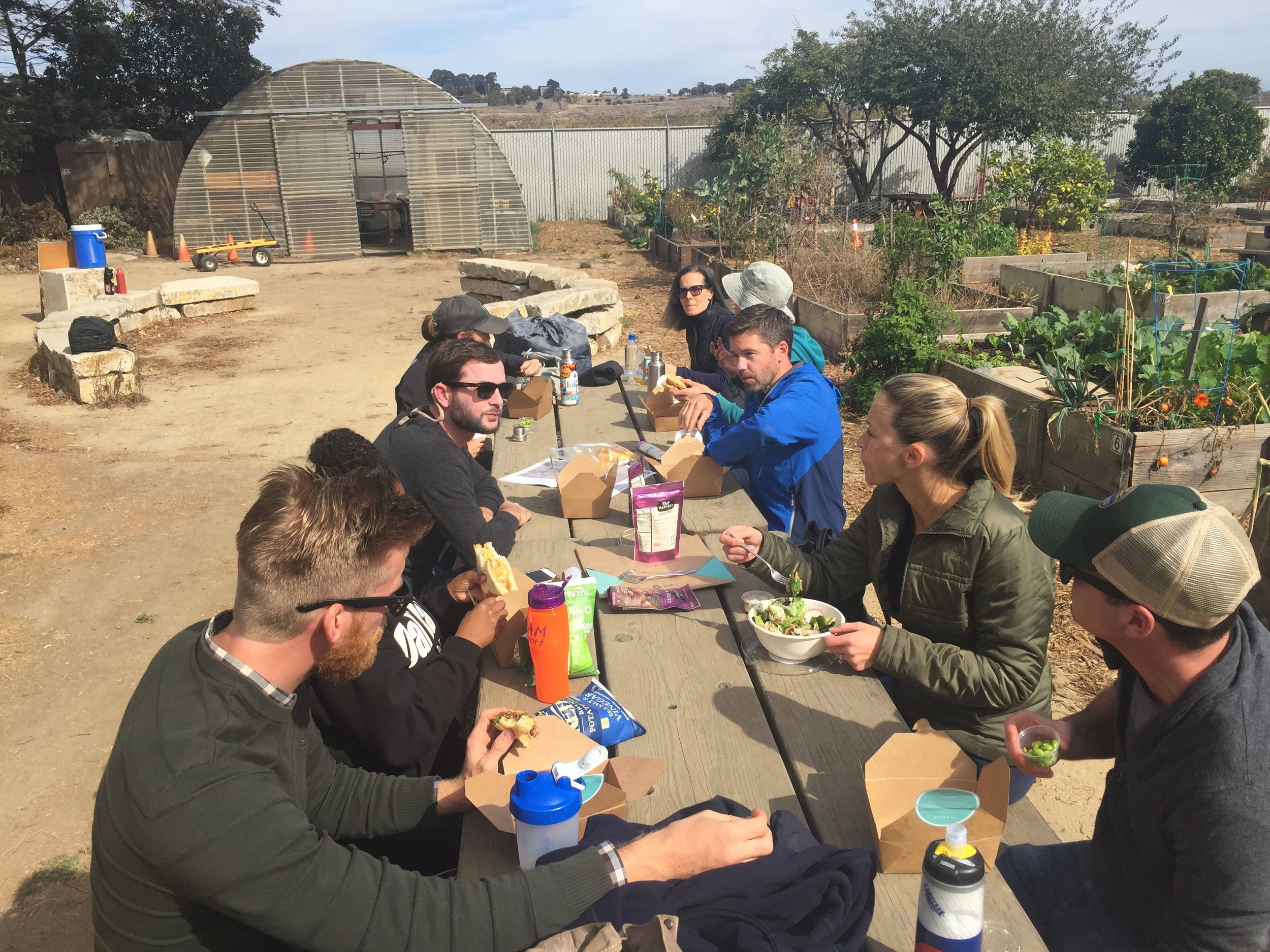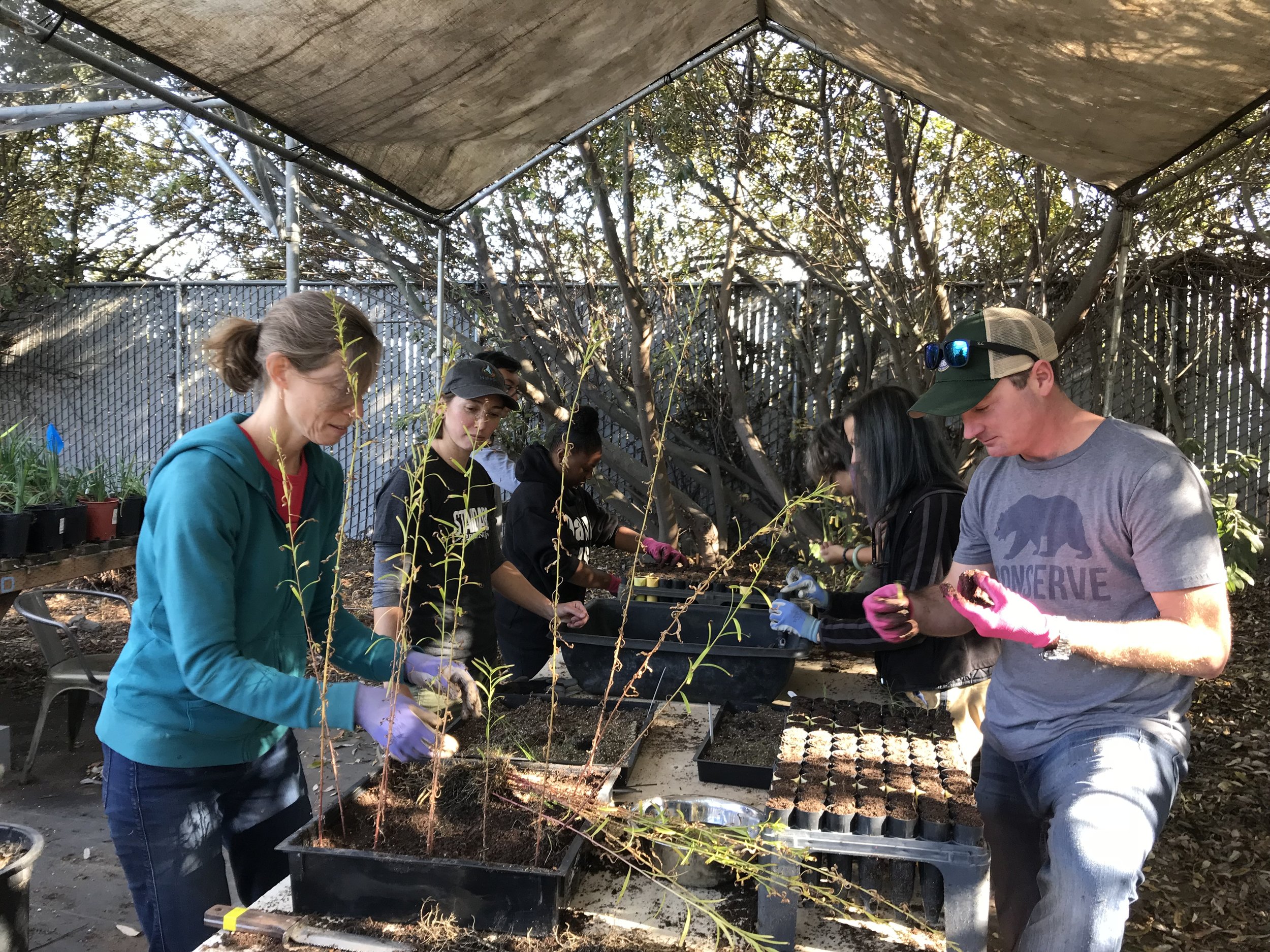Lotus Water has been partnering with The Watershed Project (TWP) in their Youth Watershed Stewards curriculum program with various high schools throughout San Francisco. The program aims to empower future generations of water stewards, by teaching local high schoolers about watersheds and the water cycle, water conservation, green infrastructure (GI), rain cistern maintenance, and careers in GI. The high schoolers then “buddy up” with younger elementary school students to pass on their acquired knowledge, working together to fix and maintain existing cisterns that have been installed in those elementary schools with help from TWP.
As part of the partnership, TWP invited Lotus to speak with different classes at John O’Connell High School and Galileo Academy of Science and Technology, leading activities like hands-on learning to design their own GI and capture-reuse systems using birdhouses and household supplies — sponges as bioretention, cups as cisterns, and tubes as gutters — to simulate stormwater capture and retention in action. At O’Connell, Terrence Ngu described differences between civil engineering and landscape architecture, and how landscape architects can design GI beyond stormwater performance to incorporate aesthetic value and co-benefits for communities. Students had a chance to see a Bay Area example of how cisterns and reuse can be integrated into public spaces by watching a video of Orange Memorial Park in South San Francisco.
At Galileo, Lotus staff spoke about civil engineering and the design process for GI, from site visit and feasibility assessment, to concept and detail design, to construction management. Students learned about the different considerations needed for each project phase and how this process leads to the finished site. Students remarked how cool it was see the built environment come to life—to think through, design, and build something physically—as opposed to creating an intangible app or other digital product that’s so common in the tech industry.
It was invigorating to have a chance to spend time with the students - Lotus looks forward to continuing to collaborate with TWP to share our expertise with curious minds and hopefully inspire some of the next leaders in managing our waters!
















